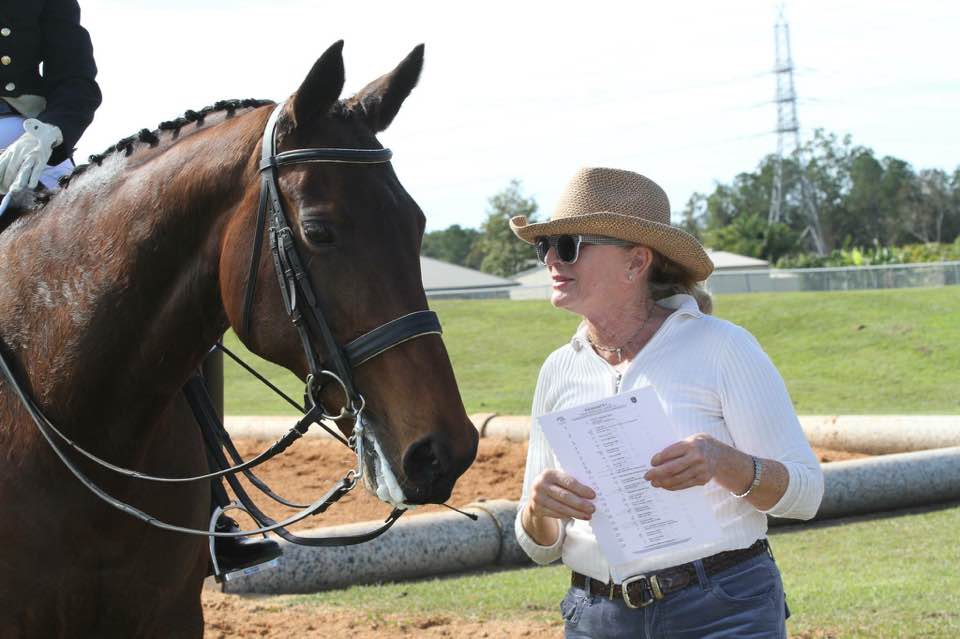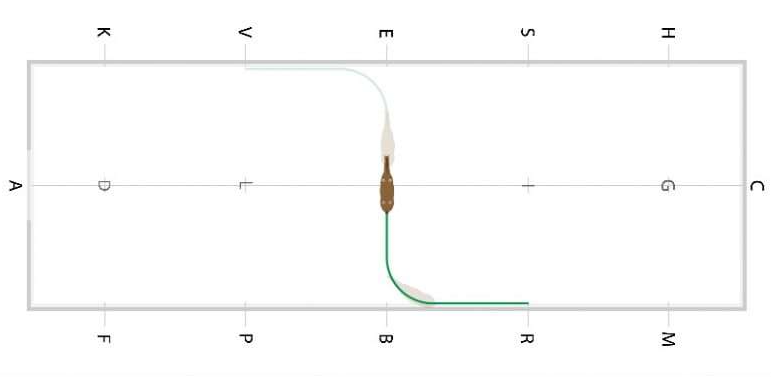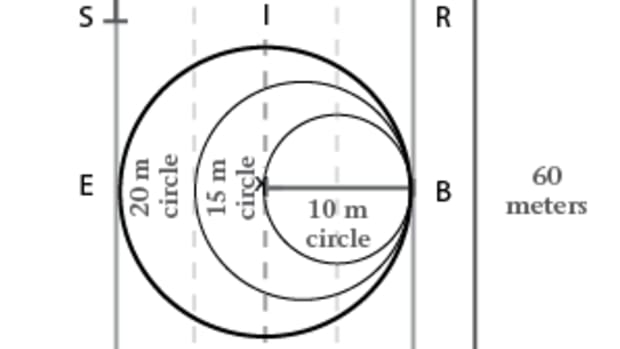
HOW TO GET ONE MORE MARK PER MOVEMENT by Lea Bierman
-
Get a copy of the current Dressage rule book and read it right through. It not only contains the rules but also valuable information on correct gaits, movements etc. Also get a copy of the "EA Expalnatory Notes For Dressage Tests for Judges and Riders" and “FEI Guidelines for Dressage Judges”. This outlines many movements and all the gaits. For example it describes what a working trot worth 10 looks like, then a 9,8,7,6,5,4,3,2,1. Same for shoulder in, flying change, renvers, medium trot etc. Being accurate and correct can easily get you extra marks.
A good example of accuracy is the riding of two half ten metre circles on B. You only need to go 5 m (half of 10) away from the BXE line, along the centre line for one horse’s length where you show the change in flexion and bend and then 5 m out from BXE line again.
-
Be very sure you have the most recent, correct copies of the Dressage tests you are riding.
-
Read the complete test when you are learning it for a competition. This includes reading the Directive Ideas on the sheet. These tell you exactly what the judges are looking for in that movement and their order of importance. Know which movements have co-efficients and pay extra attention to getting these right and so getting double the marks! Check if the transitions have separate marks e.g. into and out of medium trot. Know where each movement starts and ends. This could be important to know if your horse resists or is disobedient. Try to correct it before the next movement starts so you are only penalised once in one movement and the loss of marks is contained to one movement only.
-
Practice riding a test at least once a week. This will help you learn how the test fits together and how much preparation you need before each movement. You can also join up and practise riding three or four movements out of the test which again helps with your preparation. Some people think this may cause problems because the horse will learn the test and anticipate. But one of the main things a dressage horse has to learn is to wait for the rider’s signals. Take for instance a Grand Prix horse. They do the same test every time they compete so they would certainly know the sequence of the test but they still learn to wait, to be on their rider’s aids.
-
Practice Positive Mental Rehearsal. This means go over the test in your mind riding it without mistakes and with excellent basic gaits. Don’t dwell on what might go wrong. Such negative thoughts can set you up for failure and confuse your horse by causing your body to prepare for problems which may never happen!
-
Take care of the small things. Everything matters. Riding a correct corner gives you a chance to prepare for the next movement and also gives you a chance to repair a problem e.g. a connection issue.
-
Each correct corner has the potential to get you an extra mark.
-
Ride very good short ends. This is where the judges get the clearest side view of your horse’s shape and gaits.
-
Be sure to ride very clear transitions within the gait. For instance show very clearly the beginning AND END of your longer strides. Show everything that is listed in the movement.
-
Be accurate. Learn exactly where the correct line lies for each figure
For example -
- Shoulder in down centre line means hind legs are on the centre line and shoulders are taken over off that line.
- Know the difference between half 10m circle right at B and turn right at B.
- Keep a straight neck and body in leg yield almost parallel to long side
- A simple change is canter-walk-new canter (no trot)
- Ride every curved line on one track- inside foreleg and hind in line and outside fore and hind in line, each pair on one track etc..

-
Link the movements in your test together with a flowing, regular rhythm.
-
Have some “eyes on the ground” to check that what you think is happening is actually happening. Video some of your training at least once a week . Watch it and see how you could get one mark more.
-
Learn about ring craft and “washing the judge’s eye”. For example if your extension is not huge, ride an exaggerated down transition at the end to make the extension look bigger! Always look pleased with your test, smile and pat your horse. Remember the judges are writing your Collective Marks as you are leaving the ring.
-
Always collect your sheets and read them carefully. Decide what you should focus on to improve your marks next time. If live scoring is being used you can print your sheets. Check all the co-efficients (doubling of the mark) have been done and that the additions are correct.
-
Allow enough time for your warm up. When you arrive at the grounds check your classes are running on time. You can’t be made to ride ahead of your time. Try to be gear checked 10 minutes before your ride time in case you have to change gear. If possible have someone with you in case there is an emergency!! Doing these simple things will ensure you arrive at A not flustered but ready to do your best test possible.
-
Pay attention to the presentation of you and your horse. We know it’s not a hack class but a well presented team indicates a professional approach and shows respect for the judges.
-
While you are riding your test try to get past focussing just on where you are going. Think about how you are getting there. Ask yourself questions like “ is this a working trot?” then “ is this my best working trot?”, “are my aids correct for this movement?”, is the rhythm changing?”, “is the horse dropping on the forehand or tilting or falling out through the shoulders etc”. Use the next corner to fix the problem.
I hope you can use these tips to get one mark more per movement.
Remember getting just 6.5 for each movement gives you a final percentage of 65%
Lea Bierman
EA Level 3 Dressage Specialist, Coach Educator and Grand Prix Judge
For more details contact email [email protected] or phone 0433 149 081
If you are a Registered EA Coach in Queensland and you would like to share an article with us, please email [email protected].










